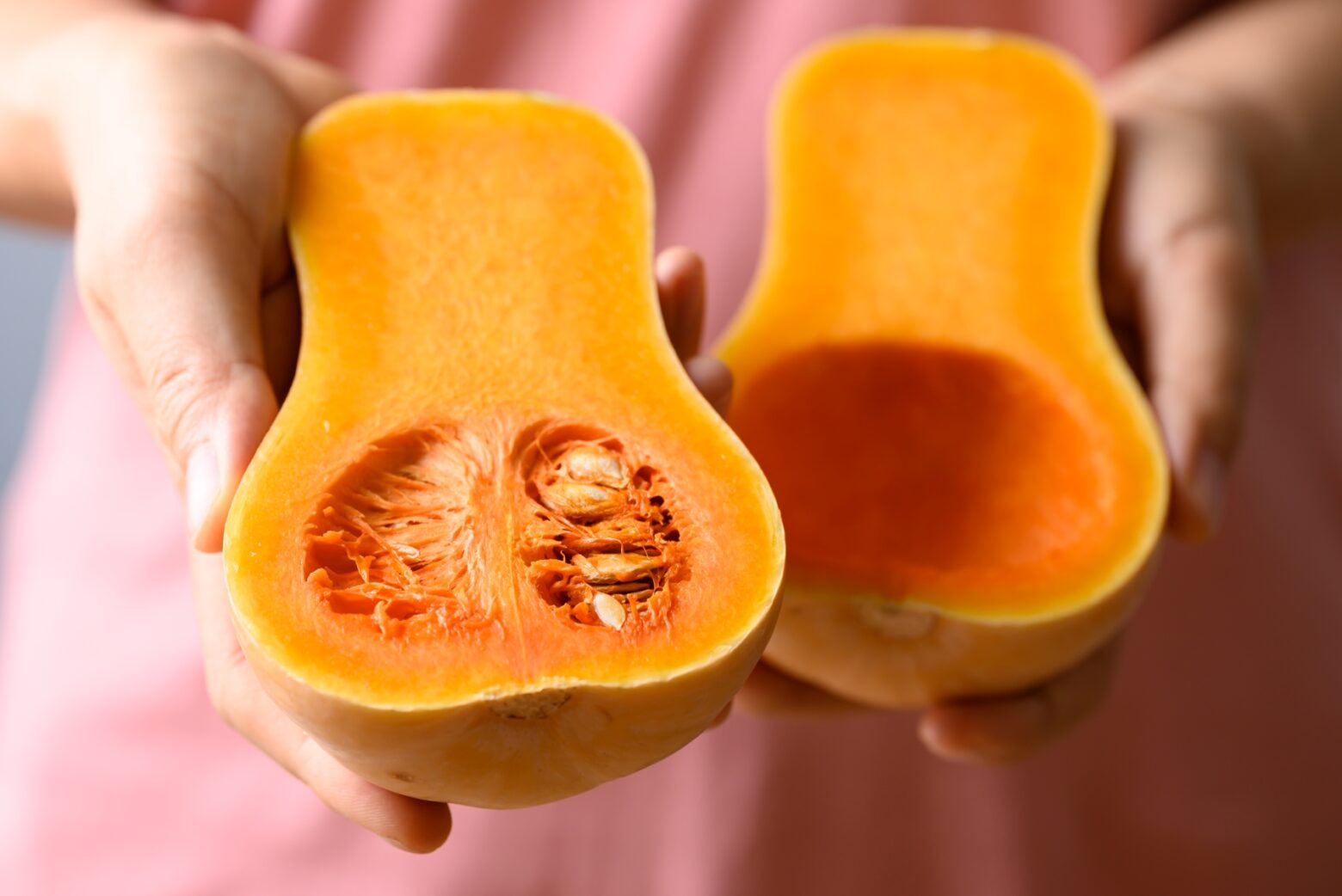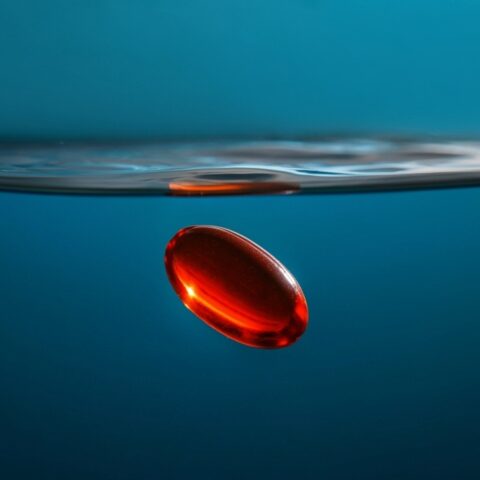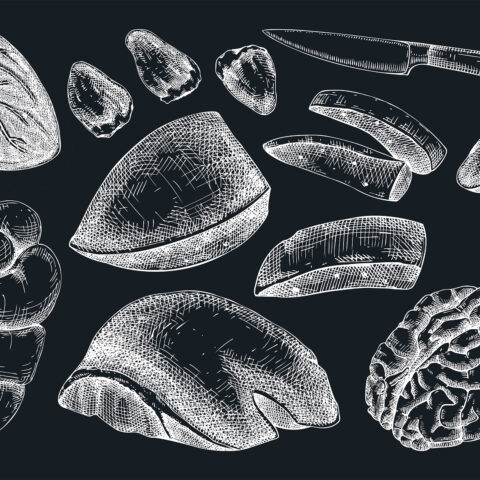Eating Gourd & Squash Seeds

Gourds and squashes are a classic part of autumn decor and the Thanksgiving tablescape. While most people view them as inedible, gourds are simply a group of plants belonging to the Cucurbitaceae family. The gourd family includes pumpkins, squash, cucumbers, and melons. It also includes ornamental gourds, primarily used as fall decoration. But whether decorative or culinary, gourd and squash seeds can be a healthy and delicious part of a Paleo diet.
Common Gourd and Squash Seeds You Can Eat
Most gourd seeds are technically edible, but seeds from edible squash varieties tend to be the most appealing. Here are some of the best-tasting squash seeds to try:
- Pumpkin: These are the most popular gourd seeds out there. They’re slightly nutty, earthy, and a little sweet. They’re milder in flavor than other squash seeds, so they pair well with both sweet and savory recipes. Pumpkin seeds are an excellent source of zinc and are also rich in fiber and other micronutrients.
- Acorn Squash: These seeds are slightly bitter compared to pumpkin seeds, but can be balanced with the right seasoning. They’re smaller and denser than pumpkin seeds.
- Butternut Squash: Butternut squash seeds are nutty with a slightly sweet, buttery flavor. They’re similar in shape to pumpkin seeds but can have a slightly tougher texture.
- Kabocha Squash: Nutty and subtly sweet with a slightly earthy undertone, these seeds have a well-balanced flavor. They’re less bitter than acorn squash seeds.
- Spaghetti Squash: Mildly nutty with a hint of sweetness, spaghetti squash seeds have a lighter, more neutral flavor than other squash seeds. While they become crispy when roasted, they’re less crunchy than other squash varieties.
With their milder flavors, pumpkin and spaghetti squash seeds are the most versatile for sweet and savory dishes.
Decorative Gourds with Seeds You Can Eat
A few decorative gourds have seeds you can eat if prepared properly. However, they may not be as palatable as those from culinary squashes. Here are a few to try:
- Small Pumpkins (Jack-Be-Little): These small ornamental pumpkins have seeds that you can roast and eat. They taste similar to pumpkin seeds.
- Turban Squash: Turban-shaped gourds are a fun addition to fall decor. You can roast and eat the seeds, but the flavor is more intense and they’re a bit chewy.
- Cushaw Gourds: While sometimes used for decoration, you can also roast and eat the seeds of cushaw gourds. They taste similar to pumpkin seeds but are more earthy.
Some gourds have bitter or extremely tough seeds. They’re not only unpalatable but may be difficult to digest. If you choose to eat seeds from decorative gourds, make sure they haven’t been treated with preservatives or chemicals. Always wash and prepare them carefully before eating.
Benefits of Gourd and Squash Seeds
Gourd seeds are packed with fiber, antioxidants, and essential vitamins and minerals. They’re particularly good sources of magnesium and zinc, which promote cardiovascular health and support the immune response. [1,2]
Antioxidants like vitamin E and carotenoids help protect the body from oxidative stress, lowering the risk of chronic disease. [3] It’s interesting to note that roasting may increase the antioxidants present. [4]
Although gourd seeds contain more omega-6 fatty acids than omega-3s, they still provide essential fatty acids needed for optimal health.
How to Prepare Gourd and Squash Seeds
Use a spoon to scoop out the seeds from a halved gourd. Separate the seeds from the flesh and pulp with your hands. Place the seeds in a bowl of water and rub to remove any remaining pulp, then pour into a colander and rinse clean.
Spread the seeds on a cloth or paper towel and pat dry. Let air dry for a few hours or overnight. When ready to roast, toss dried seeds in a bowl with olive oil or coconut oil to coat. Add your favorite seasonings.
Preheat oven to 325°F. Spread seeds evenly on a baking sheet lined with high-heat certified parchment paper or a silicone baking mat. Roast 15 to 25 minutes, stirring occasionally (some may take up to an hour). They’re done when golden brown and crispy. Remove from oven and cool completely before storing.
The next time you find yourself making one of the below recipes, make sure to save the seeds to repurpose as a snack—you can even reduce waste by freezing the pulp with your other veggie scraps to make homemade broth.
Eat Squash Seeds Sparingly
Aside from flaxseeds, The Paleo Diet recommends eating seeds in moderation due to their high omega-6 to omega-3 ratio, and gourd and squash seeds are no exception. Instead of snacking on a bag of pumpkin seeds, consider using them as a garnish in recipes. The typical serving size is one ounce.
You can also create a snack mix, grain-free granola, or homemade nut butter with added walnuts or macadamia nuts to balance the fatty acid profile. See the recipes below for ideas on how to incorporate squash seeds into other nutty recipes.
Unless you’re following an autoimmune protocol (AIP) diet, you can include squash seeds in a Paleo diet, especially when consumed seasonally and in moderation. For a healthy micronutrient balance, pair the seeds with fatty fish (like salmon, herring, or tuna) or with omega-3-rich, grass-fed red meat. For delicious options, try adding squash seeds to the following recipes.
References
- FoodData Central [Internet]. fdc.nal.usda.gov. Available from: https://fdc.nal.usda.gov/fdc-app.html#/food-details/170556/nutrients
- Shah NC, Shah GJ, Li Z, Jiang XC, Altura BT, Altura BM. Short-term magnesium deficiency downregulates telomerase, upregulates neutral sphingomyelinase and induces oxidative DNA damage in cardiovascular tissues: relevance to atherogenesis, cardiovascular diseases and aging. PubMed. 2014 Jan 1.
- Li H. Evaluation of bioactivity of butternut squash (Cucurbita moschata D.) seeds and skin. Food Science & Nutrition [Internet]. 2020 May 14 [cited 2021 Mar 5];8(7):3252–61. Available from: https://www.ncbi.nlm.nih.gov/pmc/articles/PMC7382094/
- Peng M, Lu D, Liu J, Jiang B, Chen J. Effect of Roasting on the Antioxidant Activity, Phenolic Composition, and Nutritional Quality of Pumpkin (Cucurbita pepo L.) Seeds. Frontiers in Nutrition [Internet]. 2021 Mar 10 [cited 2022 Feb 24];8:647354. Available from: https://www.ncbi.nlm.nih.gov/pmc/articles/PMC7988230/
Betsy Schroeder
Betsy does research and writing for a few different websites in the natural health field after taking Masters level courses in Nutrition & Functional Medicine through the University of Western States.
More About The Author




